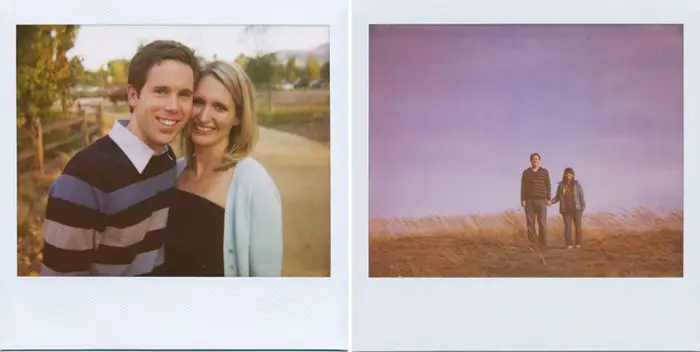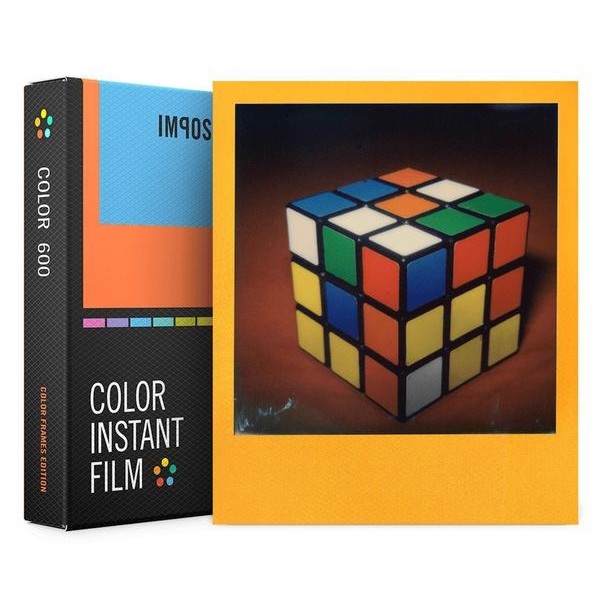

The Ballpark in Arlington – Impossible Project PZ680 – Polaroid Spectra AF I used this method for all of these shots. Since Impossible’s photos are so sensitive to light, this is a great feature to utilize. If you shoot a photo and hold down the shutter button, you can switch the timer on and it will keep the photo inside the camera until you toggle the switch back off. The Spectra’s have a cool feature with their self timers.

I had planned on using a home-made dark slide but I ended up ejecting the film directly into the box after the photo was taken. With the SX-70, I use a dark slide to protect the film from any direct light the moment it ejects out of the camera. She did mention that the PZ680 COOL that just came out was running a little faster than 680 ASA, so an underexposure adjustment might be needed. She told me that with the Spectra and the regular PZ680, it was spot on and no adjustments needed to be made. Up until this point, with the PX-70 film in a SX-70 camera, I have been cranking exposure wheel all the way down. The reason for the “ish” is that Impossible’s film speeds sometimes are a little faster than what’s intended. I doubled checked to make sure that the PZ680 I was about to shoot was indeed 600-ish speed film. Why not right?īefore I left, I called the Impossible Project space in New York to ask them a quick exposure question. I loaded up my camera bag with the Spectra, a pack of PZ680 and an icepack to keep the film cool while developing. A baseball game with some of my family came up so it was a great opportunity to test out some shots at The Ballpark. I picked up some film and waited for the right time to shoot it.

There is an autofocus lock feature, in the sense that after you press the shutter halfway, you can hold the shutter and move your viewpoint to keep that particular distance focused. It sends the sound waves to the center of what’s in the viewfinder, the sound waves bounce back, and the distance is displayed at the bottom of the viewfinder (there is a little switch to toggle between showing ft/m on the camera). When you press the shutter halfway, it emits an inaudible sound wave to measure the distance between the camera and what you’re shooting. The autofocusing feature on Spectras, and many other Polaroids, is done by sonar. The most important options at your disposal are: an exposure lighten/darken switch, a switch to toggle the flash on/off, an AF override switch to set focus to infinity, a self timer and a tripod mount. Like most Polaroids, you don’t have a ton of control over the exposure. The focal length equivalency is about about 40mm in the 35mm format. They have a unique optical system utilizing a 135mm f/10 quintic lens. I’ve seen them before but never really paid any attention. The Spectra is a cool looking analogue camera. I think somebody’s trying to tell me something … Polaroid Spectra AF – Impossible Project PZ680 The day I got it in, my buddy at Archinal Camera, handed me another Spectra! And just the other day, one of my wife’s co-workers gave us another Spectra. I picked up a nice black Spectra AF from Ebay for about $20 a couple weeks ago. I started shooting IP’s films about a month ago and I’ve been actively looking for some other Polaroids to shoot their film with. He was shooting Impossible’s PZ600UV Silver Shade.

Ghostly images bathed in degradation that I thought, up until then, only happened with time. The aesthetic qualities of the b+w’s are something that have imprinted themselves on my mind. While I was there, we visited the coastal town of Pacifica and Billy had been shooting some IP film through his Polaroid Spectra AF. I spent a handful of days there and ventured throughout the city with my Leica M2 and Mamiya C330. He was the first person that I knew that was shooting Impossible Project’s film and he had been raving over it for months. At the end of last year, I was lucky enough to break away for a bit to visit my good friend Billy in San Francisco.


 0 kommentar(er)
0 kommentar(er)
